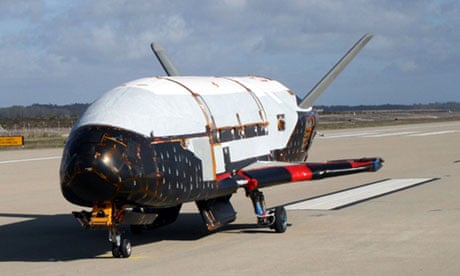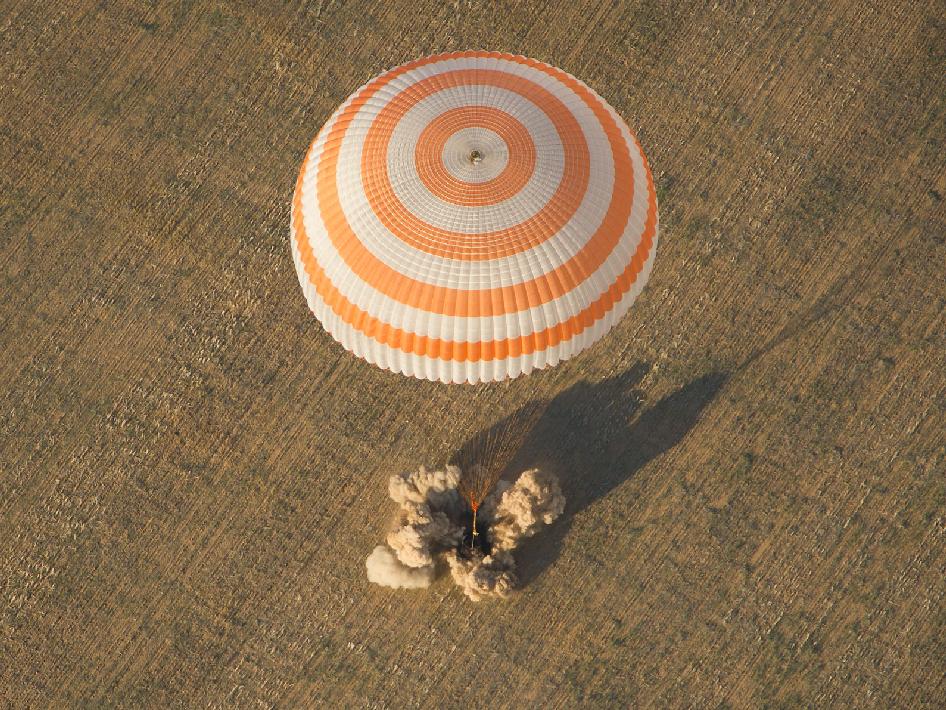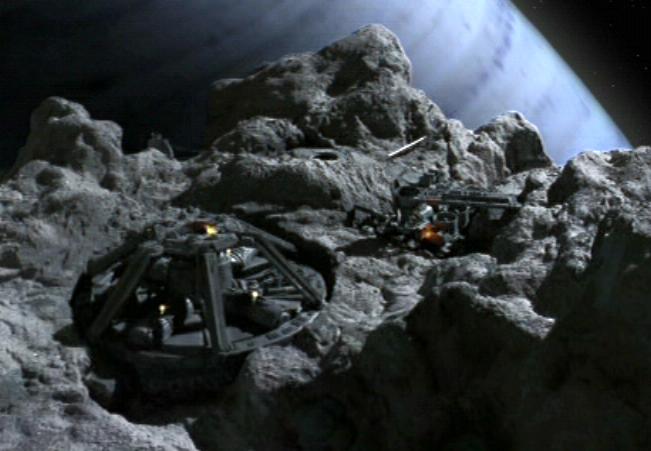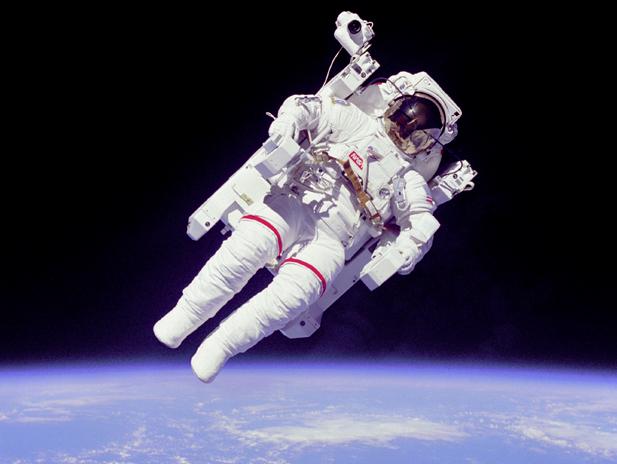General Discussion
Related: Editorials & Other Articles, Issue Forums, Alliance Forums, Region ForumsWhy are we back to dropping our spacecraft
Last edited Fri Dec 12, 2014, 03:05 AM - Edit history (1)
into the ocean, Apollo style? Does anyone know?
ETA: Now, after a few days, I wanted to thank all of you, DUers. This has been an amazingly informative thread (exactly what I had hoped for, this being DU, and all).
I apologize for my lack of replies but I've been learning, and have nothing to improve the discussion. Except, of course, thank you.
immoderate
(20,885 posts)--imm
Control-Z
(15,682 posts)I thought there was a massive loss of equipment and money that way and being able to reuse the shuttles was a step towards rectifying those losses. Shows you what I know. Lol
Xithras
(16,191 posts)Wings provide very little advantage during launch, no advantage whatsoever in space, and only a minor amount of maneuverability during unpowered re-entry. In exchange, they make the spacecraft and launch vehicles an order of magnitude more complex, make the spacecraft less survivable during emergencies, and dramatically increase launch fuel requirements and costs.
The Orion spacecraft is reusable, can stay in space longer, is safer during both launch and re-entry, is better for the environment, is cheaper to use, etc. We can build an entirely new Orion capsule for less money than it cost to refurbish the shuttle between launches. Progress isn't about building bigger ships with more features, it's about building ships that provide the most usability and safety with the smallest amount of resources.
And keep in mind that, aside from the outward shape of the vehicle, the Orion is an entirely new generation of space vehicle. Technology wise, it makes the space shuttle look like a Model T.
MADem
(135,425 posts)size.
In actuality, it is much, much bigger than the original little capsules. And with way more bells and whistles as you noted.
former9thward
(32,005 posts)It landed itself. The military had one up in space for 15 months and it landed on the land.

A secretive unmanned US space shuttle landed at a California military base early Saturday, having completed a 15-month clandestine mission.
http://www.theguardian.com/world/2012/jun/16/secretive-us-military-space-shuttle
immoderate
(20,885 posts)I should just have pointed out that this was a launch vehicle test, and considering that the US currently has no commissioned space vehicles, splash-downs are more easily designed for unmanned dummy payloads. I think that played a significant part in the design of this mission.
I didn't say it couldn't be done. It just made more sense to me. One test at a time.
--imm
tridim
(45,358 posts)Multi stage boosters always land in the ocean, for safety.
I think Musk's SpaceX is the only company landing their rockets on land.
Control-Z
(15,682 posts)I never knew why the shuttle was retired but I still assumed it had been an advancement to multi stage boosters and landing in the ocean.
TeamPooka
(24,225 posts)sharp_stick
(14,400 posts)with passengers.
It's pretty impressive.

ManiacJoe
(10,136 posts)They have little easy-access to the liquid ocean.
Quackers
(2,256 posts)They are just doing some initial testing right now. It wasn't even NASA's rocket. Theirs is still in development.
sharp_stick
(14,400 posts)still has a splashdown return.
sharp_stick
(14,400 posts)meant for longer trips out to a comet and hopefully Mars during my lifetime.
It's not feasible to have a spacecraft go out that far with all the shuttle gear required for glide landings and this is a well known technology.
ChisolmTrailDem
(9,463 posts)aircraft to the moon and Mars. The spacecraft that brings humans back nees a soft landing environment as provided by an ocean touchdown.
Also, winged aircraft are not designed to re-enter Earth's atmosphere at the speeds that deep space craft will re-enter. For instance, after a trip of 3600 miles up today, Orion entered the atmosphere at 20,000mph. A return from the moon will exceed that speed, as will a trip to Mars will be an even higher speed at re-entry.
In order to escape Earth's gravity, a spacecraft must be accelerated to in excess of 17,000mph. Only a massive, staged booster, more powerful rocket (in the case the Constellation, the most massive rocket in human history) can lift a spacecraft out of Earth's gravity field.
Finally, the entire space program today is modeled on proven technology in order to save money, considering the abuse NASA's budget has taken in the past decade or more.
Baclava
(12,047 posts)It sounds like a tale from pulp science fiction: volunteers signing up to take a one-way trip to another planet. But that's just what's in the works in the Mars One program.
http://www.mars-one.com/
The Netherlands-based non-profit organization plans to send four people to the Red Planet in 2024, with the hopes of establishing the first human settlement there.
While some are skeptical that the program will ever get off the ground, the team at Mars One stands by the mission.
"We're going to be a new and complete society on Mars," explained Dr. Norbert Kraft, Mars One Chief Medical Officer.
"Independence from Earth is the goal in the end."
According to the group's mission statement, after the initial team touches down, follow-up groups would leave for Mars every two years. These settlers would reside in specially designed pods where they would live off of supplies from Earth at the start, but eventually form a self-sustaining community. Their food would be grown indoors under LED lights, using hydroponic techniques that don't require soil.

http://www.cbsnews.com/news/a-one-way-trip-to-mars/
Xithras
(16,191 posts)Basically, at 30 miles up, the air pressure is equal to Earth, the atmosphere is 20+% oxygen with most of the rest made up of nitrogen, and temperatures that vary between 60 and 100 degrees Fahrenheit...about like San Diego. At that elevation, you're also above the bulk of the planets carbon dioxide, and you're above the sulfuric acid haze layer that blankets the planet further down. You DO still have sulfuric acid clouds drifting by which are capable of ruining your day, but you're above the worst of what Venus has to offer.
The new proposal was much simpler than terraforming proposals that have popped up in the past. Basically, it calls for landing a swarm of robots and large mining equipment on the Venusian surface. The robots would pick a relatively large and active volcano, set it off by drilling into it, and then keep it erupting. Other robots would operate earth movers to channel and direct the magma flows into an ever growing artificial mountain that would rise higher and higher through the atmosphere. There were even mechanisms identified to cool the lava more rapidly than would occur naturally.
It would take a great deal of time, but eventually you'd have a man-made mountain that rose high enough to reach the human-habitable portions of the Venusian atmosphere. Once there, the only thing you would need to build a habitable colony are filters to scrub the sulfuric acid from the otherwise breathable air, and a clear air-pressure supported dome to keep the unfiltered air out. It's still not "shirtsleeve friendly", but it's a far friendlier and more Earth-like than any location on Mars.
While it would take centuries, you could eventually end up with a mountain akin to Olympus Mons, with a flat area in the "habitable" part of the Venusian atmosphere dozens of miles across.
It went even further by pointing out that Venus actually has most of the component parts needed to manufacture sodium bicarbonate using modern industrial methods, and that the only thing really missing is water. Everything is either already there, or can also be synthesized using water. With enough water, it might even be possible to reduce the sulfuric acid level in the atmosphere. We'll never rid the planet of it, but sulfuric acid is much heavier than carbon dioxide, nitrogen, or oxygen. It would take many millennia, but eventually the amount could theoretically be reduced enough to drop the sulfuric acid cloud level below the tops of the artificial mountains. There are still a lot of unknowns when it comes to that idea, but comet harvesting could make it happen.
Baclava
(12,047 posts)Self-contained spaceships themselves, we could head to them right away
"Planet dwellers like us naturally look first to other moons and planets for colonization. Yet, asteroids have enough resources to build space habs for trillions, with the same living space per person as for Earth.
The idea is to use the materials from the asteroids and NEOs to make new habitats. This gives far more living space than the amount you get if you hollow asteroids out, and live inside them."

http://www.science20.com/robert_inventor/blog/asteroid_resources_could_create_space_habs_trillions_land_area_thousand_earths-116541
Xithras
(16,191 posts)...is that you're always only one seam failure away from catastrophe. Because habitats in those environments are all pressurized, the danger of catastrophic depressurization is always present. If you want to get people off the surface permanently, they need to be placed in locations where populations can be maintained for millennia without constant resupply from Earth.
That's the real advantage of Venus. The domes would essentially be unpressurized, and the only purpose they serve is to keep out harmful gasses. The technology would be no more complex than what we use to inflate sports staduium domes today. And even if there is a failure, it's not instantly lethal, so the population would have time to flee to shelters while the damage was repaired.
The only resource needed to keep a Venusian colony alive would be water.
Baclava
(12,047 posts)The temperature and pressure on the surface of Venus are so extreme that none of the armored Russian spacecraft of the Venera series lasted more than an hour on the surface. Within that short period, they and the multiprobe of the Magellan mission have provided us with all the direct data we have about the harsh Venusian surface. The pressure at the surface is about 90 Earth atmospheres! This is a pressure of about 900 Newtons per square centimeter or about 1300 pounds per square inch.
The surface temperature of about 750 K or about 480°C or nearly 900°F is hot enough to melt lead, hotter than any household oven temperature. This temperature destroyed the well-insulated and highly protected Russian electronics of the Venera surface craft within an hour.
http://hyperphysics.phy-astr.gsu.edu/hbase/solar/venusenv.html#c2
Xithras
(16,191 posts)Did you read the post? The idea is to harness Venus's existing widespread volcanism to build a series of artificial Olympus Mons' across the planet. 50km up, the air pressure is equal to the Earth, you're above the sulfuric acid haze, and the atmosphere averages 75-80F. The atmosphere at that altitude is primarily composed of oxygen and nitrogen, much like Earth. Aside from building the towers or mountains, the only real challenge is filtering the acid from the air to make it breathable. We have the technology to do THAT today.
If the surface can't be made habitable, the idea is to raise spots on the surface above the uninhabitable zone so they CAN be inhabited. "Cloud cities" have been discussed in the past for the same reasons, but floating cities are impractical for many reasons (primarily that you're always one burst balloon away from tragedy). Volcanic construction gives you the same advantages of floating in the clouds, without actually having to step off the ground.
Baclava
(12,047 posts)Show me a scientific paper that even hints at this preposterous notion.
And we don't have any technology to scrub the atmosphere of an entire planet, that's complete bunk too.
Keep it real.
The idea is based on the fact that Venus is already an extremely volcanic planet and is home to some of the largest volcanic flows in the solar system. Once started, Venusian volcanoes can flow for centuries.
The proposal called for the construction to start with an existing volcanic vent, so there won't be a need to drill through the crust. Once started, the buildup would occur via levees and flow direction using technologies no more advanced than those we already use right now around Mauna Kea and Etna. There's nothing particularly sci-fi about it. And if the volcano stops erupting, it can be restarted using targeted nuclear detonations and drilling. Again, nothing particularly advanced. The goal is to simply build a shield volcano....something that already occurs naturally. We just need to build an exceptionally tall one.
As for scrubbing the atmosphere, that isn't something we need to worry about. That is a problem for Venusians in the far future to deal with, if they ever choose to worry about it at all.
The problem with the Martian and lunar colonization proposals is that they simply aren't sustainable over the long term. Sure, we can build a hamster tube on Mars, but how long would that last? How long until metal fatigue destroyed the tubes? How long until it ran out of resources? Would it be permanently dependent on Earth for repair materials? How long can THAT last? Can you tell me with any certainty that we can supply outposts there for 500 years without interruption? A thousand years? Five thousand years? Long after our nations have ceased to exist, what value will our descendants see in sending supply missions to other planets? One interruption and the colonies simply die off.
The advantage of Venus is that it's the only option that can provide the resources capable of allowing a human settlement to survive on a permanent basis without assistance from Earth, without putting humans in a situation where they are one seal-failure or economic collapse away from death. Air pressure similar to Earth? Check. Atmosphere with Oxygen/Nitrogen mix that can be processed to support human life? Check. Local minable resources for metals and other materials needed to build and repair equipment and structures? Check. Large scale energy sources available? Check. Raw materials for sustainable agricultural projects available? Check.
You only need two things to build a permanent and independent human population on Venus. You need water, and you need enough altitude to get the humans out of its atmospheric "hell" zone. Everything else is there or can be manufactured using base materials that already exist there. Even the filters to scrub the acid from the atmosphere within the domed cities can be manufactured there using only water.
It would take longer to set up a colony on Venus, because building the mountains would take centuries, but in the long term it is actually the most viable place within our solar system to establish a permanent and completely independent human population. The arguments against it tend to come back to its hellish surface, but the fix for that is to stay off its surface. Altitude makes all the difference.
Baclava
(12,047 posts)Asteroids are still my #1 bet - we have the technology
http://www.space.com/15391-asteroid-mining-space-planetary-resources-infographic.html

Humanist_Activist
(7,670 posts)they will also be several hundred cubic square kilometers in volume, on the small side. This is less like having a scuba tank explode from rapid depressurization, and more like a Macy's day parade float deflating. At the actual site of failure, it would be possibly catastrophic, but given the volumes talked about, it would take anywhere from hours to days before a habitat is depressurized.
I'm not opposed to the idea of Venusian colonies, seems awesome, but we should be looking at and implementing a variety of techniques to colonize outside of Earth.
kentauros
(29,414 posts)It's quite impressive, too ![]()
http://vimeo.com/108650530
Humanist_Activist
(7,670 posts)A pretty cool property of them is that since they are large, mostly empty cylinders that would spin for gravity, they would have a similar gradient of atmospheric density as Earth, not in size, but just in idea. On the inner surface, the atmospheric pressure would be close to Earth's at sea level, and the closer you move to the axis of rotation, it would be closer to a vacuum. Depending on the size and radius of the cylinder, the cylinder may not even have to be sealed near the axis of rotation at the end caps. It could be open to allow ships and cargo into the interior, and people can live, unprotected, on the inside of the surface of the cylinder. The rotation of the habitat itself would serve as the means to mostly seal the atmosphere in place.
Any catastrophic event that would threaten the integrity of the atmosphere and habitability of the habitat would have to compromise the structural integrity of the entire habitat, puncture the outer and inner surface of the cylinder, or both. The issue is that we would assume the people living and working in such a habitat are aware of the risks and how to handle such disasters, they would, hopefully, be rare. Indeed, given the vastness of space, the size of such habitats, and the ability to have technology such as radar, unless it was a type of industrial accident, sabotage or attack, it would be impossible for this to end up being a natural disaster, like an asteroid strike. Unlike people on Earth, the people of the habitat would know well ahead of time when danger is arriving, and be able to move their habitat out of the way.
hunter
(38,311 posts)That's why I'm against flying cars, and even airlines too.
Any other questions?
Mankind's future is not in space. We are creatures of this earth.
That's not to say our intellectual and modified biological children shouldn't be at home at home in space and invite us to visit sometimes.
If you can't go streaking barefoot and naked across the Martian landscape do you really have any business being there?
Baclava
(12,047 posts)Get the ball rolling, it's time for our swarm to leave the nest!
We will spread our seed to the stars, it is our destiny.
Humans are born explorers, we lust for the unknown.
hunter
(38,311 posts)And I hope they respect humans as their parents, or at least as interesting pets.
Baclava
(12,047 posts)
The2ndWheel
(7,947 posts)cpwm17
(3,829 posts)and it would also be impossible. It would also be child abuse to take any kid into space and Mars. They are terrible and nasty places for humans and we have no future there.
Baclava
(12,047 posts)Our future evolution is far beyond Mars

prehensile tails would be handy though...like our Lemur ancestors
hunter
(38,311 posts)... in fact it's cold as hell.
But it's possible we could send increasingly autonomous, even humanoid robots to Mars that could send back stories of what it's "like" there in ways we humans can more closely relate too. That's all most humans will ever know of the moon or mars anyways, or even the south pole or deep seas of earth.
Katashi_itto
(10,175 posts)self-extinction. We don't belong in space.
Posteritatis
(18,807 posts)Apollo (or Soyuz, or Orion) capsules and the Shuttle are different creatures meant for very different tasks, as opposed to a case of one being more advanced than the other.
There's a lot of creativity going on about ways to cut the speed of unmanned craft down to zero, but with the manned stuff I'm quite okay with their being a bit more conservative in the it-ain't-broke sense.
Besides, the point of the ship is what it does while it's up, not how it comes down again.
NuclearDem
(16,184 posts)NutmegYankee
(16,199 posts)
We Nuked it!
backscatter712
(26,355 posts)The space shuttle only worked because it was only capable of low-earth orbit, with speeds that are relatively slow as far as orbiting spaceships go - about Mach 25.
The Orion's designed to go to the Moon, or to asteroids, or even to Mars. When it comes back, it will be on a trajectory that is much, much faster than the Shuttle's low-earth orbit. Plunge into the atmosphere at those speeds in the shuttle, and the forces will rip the wings off.
The only way to do it is with a capsule - Apollo style.
Granted, I'm more of a fan of how Elon Musk wants to do it in SpaceX - the Dragon is also a capsule, but rather than using parachutes and dropping into the drink, it has rocket engines onboard that will enable it to make a controlled landing.
cherokeeprogressive
(24,853 posts)Getting something, anything, into space is an incredibly complicated undertaking. Every ounce needs to be accounted for and justified. Engineers even have to calculate the amount of fuel needed to lift the fuel needed to lift the vehicle out of Earth's atmosphere.
A system that would allow a vehicle to land on a runway, such as the shuttle did, requires wheels, tires, struts (VERY HEAVY), hydraulic/pneumatic systems, and all associated lines, pumps, hoses, and fluids. Then the vehicle structure has to be reinforced in order to allow attach points for all that equipment. Even the weight of the switches used to control the system needs to be considered. THEN calculations need to be made to find out how much fuel is needed to lift the extra weight, and how much fuel is needed to lift the fuel needed.
I assume that weight would be better allotted to life support systems and sustenance for such a long mission.
Odin2005
(53,521 posts)Also, the new Orion capsule is going to be for missions outside Low Earth Orbit, like going to the Moon, Near Earth Asteroids, and, ultimately, Mars.
NASA has decided to leave Low Earth Orbit to the private sector and focus on it's true mission, which is exploration.
Kurska
(5,739 posts)We never should have designed reuseable exit and reentry aircraft. Honestly, it was probably one of the driving factors behind the disasters that we did.
Boosters that you discard and reentry pods are the cheapest and safest way to do it.
Baclava
(12,047 posts)Recursion
(56,582 posts)It quadruples the amount of engineering required for very little gain.
B Calm
(28,762 posts)at the age that I am now.
kentauros
(29,414 posts)partly because Arthur C. Clarke also thought the momentum behind the Apollo program would keep going. He obviously had no clue how America politics worked, especially with regards to their relationship with government-funded scientific endeavors...
B Calm
(28,762 posts)we would probably all be driving solar powered flying cars by now. Republicans keep digging in their heels as we slowly progress.
Katashi_itto
(10,175 posts)Baclava
(12,047 posts)It doesn't get any simpler than that.
NASA Developing New Heat Shield for Orion
NASA's new spaceship of the future must endure searing temperatures capable of melting iron, steel or chromium as the spacecraft streaks into the Earth's atmosphere on the way back from the moon.
Faster than the fastest bullet, the spaceship – called the Orion – will enter Earth's atmosphere at 6.8 miles (11 kilometers) per second, generating surface temperatures equivalent to more than 4,800 degrees Fahrenheit (2,649 degrees Celsius.)
"The difference between 7.5 kilometers per second (shuttle re-entry speed from low-Earth orbit) and 11 kilometers per second (Orion capsule re-entry speed from the moon) translates into a factor of five in increase of heat rate (for the Orion)
http://www.nasa.gov/mission_pages/constellation/orion/orionheatshield_prt.htm
